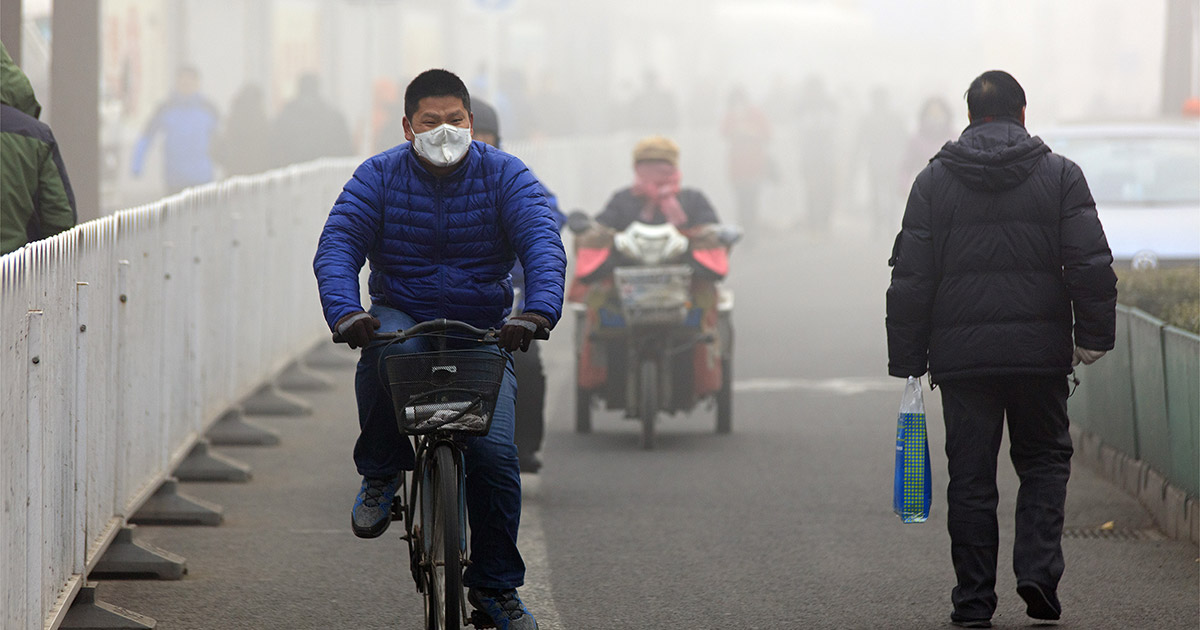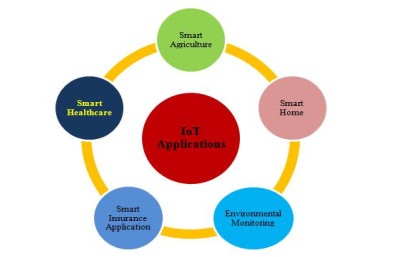
Climate Change and Air Quality: Impacts on Human Health

Climate change affects air quality, which in turn can lead to adverse health outcomes. Disruptions to weather patterns influence our air quality by increasing and distributing air pollutants, such as ground-level ozone, fine particulates, wildfire smoke, and dust. Changes to weather seasons also impact the production, distribution, and severity of airborne allergens. The EPA’s Air Quality National Summary Report states that around 100 million people living in the U.S. reside in communities where air pollution exceeds health-based air quality standards.
While primarily affecting outdoor air quality, these pollutants and allergens can also impair indoor air quality by entering homes, schools, and buildings. Additionally, climate change may contribute to the increased prevalence of indoor pollutants like mold.
Respiratory and Cardiovascular Impacts
Poor air quality can negatively affect human health. Exposure to air pollutants or airborne allergens can directly harm our respiratory and cardiovascular systems or exacerbate existing conditions in susceptible populations, , . Children, older adults, persons with asthma, and immunocompromised persons are most vulnerable to air quality impacts.
Respiratory impacts can include asthma, respiratory allergies, and airway diseases, while cardiovascular impacts can include hypertension, coronary artery disease, heart attack, and stroke. Globally, millions of premature deaths are caused by air pollution. Exposure to and inhalation of ground-level ozone and particulate pollution account for tens of thousands of hospital visits each year. Symptoms of ozone and particulate pollution exposure can include chest pain, coughing, throat irritation, congestion, and reduced lung function. Similarly, higher pollen concentrations and longer growing seasons, consequences of warming temperatures, can increase sensitivity to allergens and severe allergic reactions, such as allergy-induced asthma attacks.
Climate-related changes to weather patterns are increasing the frequency and severity of droughts, which can create conditions for dust and dust-borne pathogens such as bacterial and fungal spores to enter homes, buildings, and schools.
Opportunities for Public Health Improvement
Changes to the built environment can be effective measures to protect human health and safeguard communities from the health effects of climate change. For example, low impact landscaping and tree cover in urban settings can help mitigate air pollution.
Effective measures for improving air quality can also include transportation alternatives. Reducing the number of vehicle miles traveled while increasing carpooling, use of public transportation, and other alternative transportation options can lower the level of emissions of ozone, particulate matter, and other pollutants associated with respiratory and cardiovascular diseases. Reduced electricity use in areas that burn coal or other fossil fuels for energy production can lower exposure to heavy metals, such as mercury and lead, and nitrogen oxides and sulfur oxides.
Research Needs
Research and research translation are important to further understand the effects of climate change and air quality impacts. Air quality impacts depend on complex synergistic effects of temperature, weather variability, long-term climate change, and environmental exposures. Transdisciplinary approaches to research in this field are critical.
Air quality monitoring to evaluate pollution, air-borne allergens, aerosolized pathogens, and dust burdens will improve the ability to model future health impacts. In addition, data collection on climate-dependent variables, such as wildfires and land-use, will improve understanding of their impacts on health.
Research is also needed to better understand climate impacts on indoor air quality, including temperature, humidity, ventilation, fungi, mold, biological contaminants, and volatile organic compounds.
SDGs, Targets, and Indicators
| SDGs | Targets | Indicators |
|---|---|---|
| SDG 3: Good Health and Well-being | 3.9 By 2030, substantially reduce the number of deaths and illnesses from hazardous chemicals and air, water, and soil pollution and contamination. | – Number of premature deaths caused by air pollution – Number of hospital visits due to ground-level ozone and particulate pollution exposure – Number of asthma attacks and respiratory allergies |
| SDG 11: Sustainable Cities and Communities | 11.6 By 2030, reduce the adverse per capita environmental impact of cities, including by paying special attention to air quality and municipal and other waste management. | – Air quality standards in communities – Level of emissions of ozone, particulate matter, and other pollutants associated with respiratory and cardiovascular diseases |
| SDG 13: Climate Action | 13.1 Strengthen resilience and adaptive capacity to climate-related hazards and natural disasters in all countries. | – Frequency and severity of droughts – Changes in weather patterns |
| SDG 17: Partnerships for the Goals | 17.16 Enhance the Global Partnership for Sustainable Development, complemented by multi-stakeholder partnerships that mobilize and share knowledge, expertise, technology, and financial resources. | – Research on climate change and air quality impacts – Transdisciplinary approaches to research in the field – Air quality monitoring and data collection on climate-dependent variables |
1. Which SDGs are addressed or connected to the issues highlighted in the article?
SDG 3: Good Health and Well-being
This SDG is connected to the issues highlighted in the article because it focuses on reducing deaths and illnesses caused by hazardous chemicals and air pollution. The article discusses how poor air quality, influenced by climate change, can lead to respiratory and cardiovascular impacts, including asthma, allergies, and cardiovascular diseases.
SDG 11: Sustainable Cities and Communities
This SDG is connected to the issues highlighted in the article because it emphasizes the importance of paying special attention to air quality in cities. The article mentions that changes to the built environment, such as low impact landscaping and tree cover, can help mitigate air pollution.
SDG 13: Climate Action
This SDG is directly addressed in the article as it discusses the impact of climate change on air quality. The article mentions that climate-related changes to weather patterns are increasing the frequency and severity of droughts, which can create conditions for dust and dust-borne pathogens to enter homes and buildings.
SDG 17: Partnerships for the Goals
This SDG is connected to the issues highlighted in the article because it emphasizes the importance of partnerships and knowledge sharing in addressing sustainable development challenges. The article mentions the need for research, research translation, transdisciplinary approaches, and data collection to better understand the effects of climate change on air quality.
2. What specific targets under those SDGs can be identified based on the article’s content?
– Target 3.9: By 2030, substantially reduce the number of deaths and illnesses from hazardous chemicals and air, water, and soil pollution and contamination.
– Target 11.6: By 2030, reduce the adverse per capita environmental impact of cities, including by paying special attention to air quality and municipal and other waste management.
– Target 13.1: Strengthen resilience and adaptive capacity to climate-related hazards and natural disasters in all countries.
– Target 17.16: Enhance the Global Partnership for Sustainable Development, complemented by multi-stakeholder partnerships that mobilize and share knowledge, expertise, technology, and financial resources.
3. Are there any indicators mentioned or implied in the article that can be used to measure progress towards the identified targets?
– Number of premature deaths caused by air pollution: This indicator can measure progress towards Target 3.9.
– Number of hospital visits due to ground-level ozone and particulate pollution exposure: This indicator can measure progress towards Target 3.9.
– Number of asthma attacks and respiratory allergies: This indicator can measure progress towards Target 3.9.
– Air quality standards in communities: This indicator can measure progress towards Target 11.6.
– Level of emissions of ozone, particulate matter, and other pollutants associated with respiratory and cardiovascular diseases: This indicator can measure progress towards Target 11.6.
– Frequency and severity of droughts: This indicator can measure progress towards Target 13.1.
– Changes in weather patterns: This indicator can measure progress towards Target 13.1.
– Research on climate change and air quality impacts: This indicator can measure progress towards Target 17.16.
– Transdisciplinary approaches to research in the field: This indicator can measure progress towards Target 17.16.
– Air quality monitoring and data collection on climate-dependent variables: This indicator can measure progress towards Target 17.16.
Overall, the article provides several indicators that can be used to measure progress towards the identified targets.
4. Table: SDGs, Targets, and Indicators
| SDGs | Targets | Indicators |
|---|---|---|
| SDG 3: Good Health and Well-being | 3.9 By 2030, substantially reduce the number of deaths and illnesses from hazardous chemicals and air, water, and soil pollution and contamination. | – Number of premature deaths caused by air pollution – Number of hospital visits due to ground-level ozone and particulate pollution exposure – Number of asthma attacks and respiratory allergies |
| SDG 11: Sustainable Cities and Communities | 11.6 By 2030, reduce the adverse per capita environmental impact of cities, including by paying special attention to air quality and municipal and other waste management. | – Air quality standards in communities – Level of emissions of ozone, particulate matter, and other pollutants associated with respiratory and cardiovascular diseases |
| SDG 13: Climate Action | 13.1 Strengthen resilience and adaptive capacity to climate-related hazards and natural disasters in all countries. | – Frequency and severity of droughts – Changes in weather patterns |
| SDG
Behold! This splendid article springs forth from the wellspring of knowledge, shaped by a wondrous proprietary AI technology that delved into a vast ocean of data, illuminating the path towards the Sustainable Development Goals. Remember that all rights are reserved by SDG Investors LLC, empowering us to champion progress together. Source: niehs.nih.gov
Join us, as fellow seekers of change, on a transformative journey at https://sdgtalks.ai/welcome, where you can become a member and actively contribute to shaping a brighter future.
|







